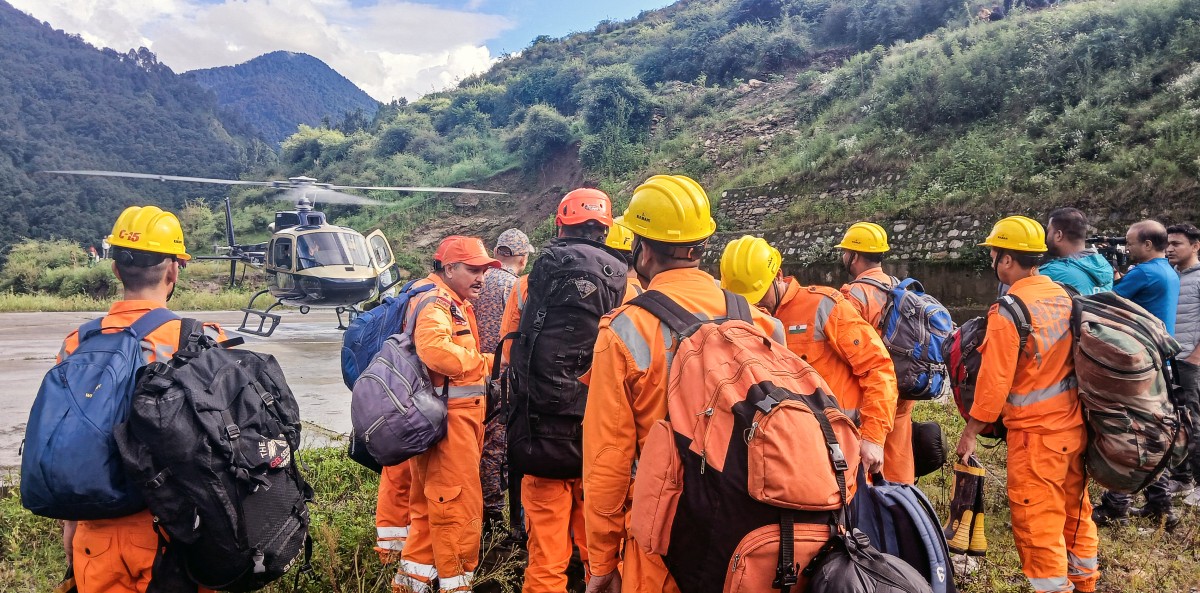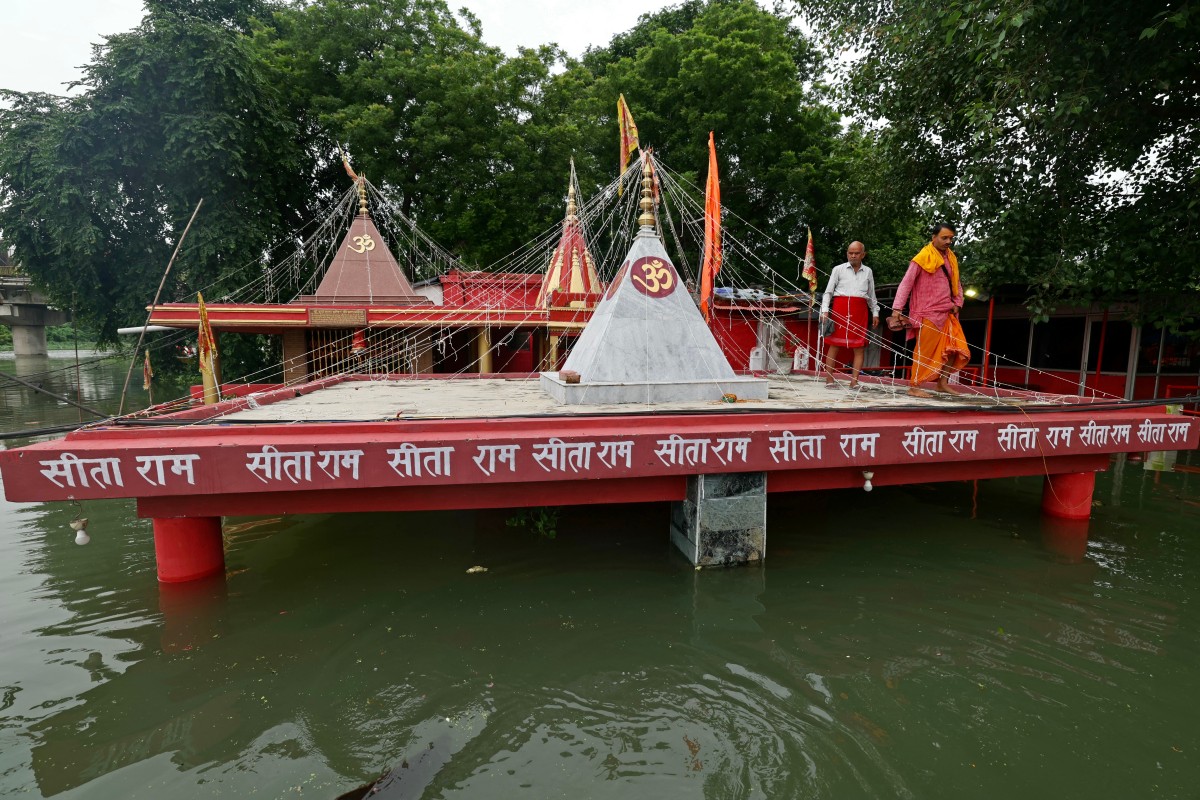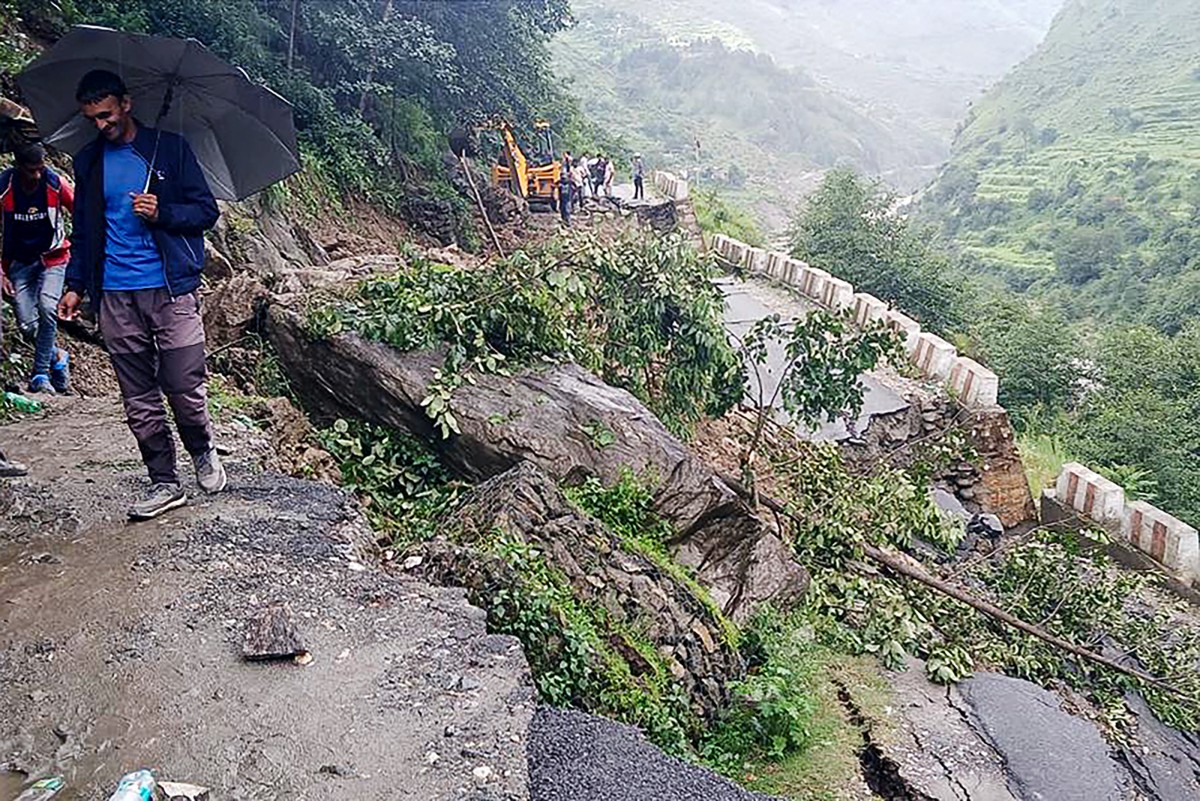
By Agence France-Presse
The Indian army brought in sniffer dogs, drones, and heavy earth-moving equipment on Wednesday to search for scores of people missing a day after deadly Himalayan flash floods.
At least four people were killed and more than 50 are unaccounted for after a wall of muddy water and debris tore down a narrow mountain valley, smashing into the town of Dharali in Uttarakhand state, rescue officials said on Wednesday.
Climate change experts warned that the disaster was a “wake-up call” to the effects of global warming. Deadly floods and landslides are common during the monsoon season from June to September, but experts say climate change, coupled with urbanization, is increasing their frequency and severity.
Torrential monsoon rains have hampered rescue efforts, with communication limited and phone lines damaged.
However, the assessment of the number of missing individuals has been reduced as soldiers and rescue teams reached marooned individuals. Around 100 people were reported as unaccounted for late on Tuesday.
“The search for the missing is ongoing,” said Mohsen Shahedi from the National Disaster Response Force.
Videos broadcast on Indian media showed a terrifying surge of muddy water sweeping away multi-storey apartment blocks in the tourist region on Tuesday afternoon.
Shahedi said more than 50 people were missing from Dharali, while 11 soldiers were unaccounted for from the nearby downstream village of Harsil.
“Additional army columns, along with army tracker dogs, drones, logistic drones, earthmoving equipment, etc., have been moved… to hasten the efforts,” the army said.
Military helicopters were flying in essential supplies, it said, as well as picking up those stranded after roads were swept away, even though rain and fog made flights difficult.

‘Unimaginable scale’
Uttarakhand Chief Minister Pushkar Singh Dhami said the flood was caused by an intense “cloudburst” of rain and that rescue teams had been deployed “on a war footing.”
Several people could be seen in videos running before being engulfed by the waves of debris that uprooted entire buildings.
Suman Semwal told the Indian Express newspaper that his father saw the flood hitting Dharali with a “rumbling noise” from a village uphill.
What he saw was on an “unimaginable scale,” he said.
“They tried to scream, but could not make themselves heard,” Semwal told the newspaper. “The people couldn’t comprehend what was happening. The floodwaters struck them in 15 seconds.”
A large part of the town was swamped by mud, with rescue officials estimating it was 50 feet (15 meters) deep in places, swallowing some buildings entirely.
Images released by the army and government rescue teams showed men heaving rocks by hand and earth movers removing debris to clear roads.
Government weather forecasters said on Wednesday that all major rivers in Uttarakhand were flowing above danger levels.
“Residents have been moved to higher reaches in view of rising water levels due to incessant rains,” the army said.

The UN’s World Meteorological Organization said last year that increasingly intense floods and droughts are a “distress signal” of what is to come as climate change makes the planet’s water cycle even more unpredictable.
Hydrologist Manish Shrestha said the 270 millimeters (10 inches) of rain that fell within 24 hours counted as “an extreme event.”
Shrestha, from the Nepal-based International Center for Integrated Mountain Development, said such rain in the mountains had a “more concentrated” impact than on flatter lowlands.
“Such intense rainfall events are becoming increasingly common, and could be linked to climate change,” he said.
Climate activist Harjeet Singh, from the Satat Sampada Climate Foundation in New Delhi, said “unscientific, unsustainable, and reckless construction in the name of development were exacerbating the problem and destroying our natural defenses.”
“Global warming is super-charging our monsoons with extreme rain. The devastating loss… must be our final wake-up call,” Singh said.
